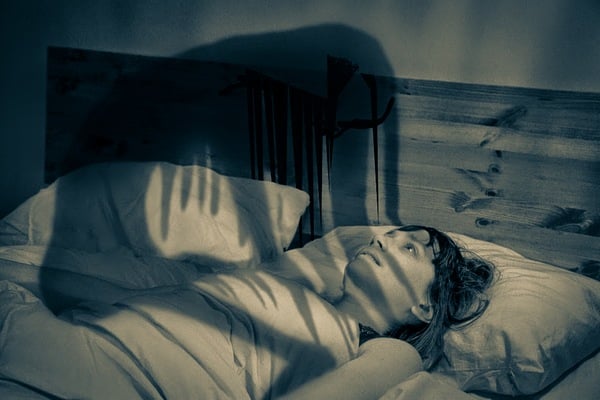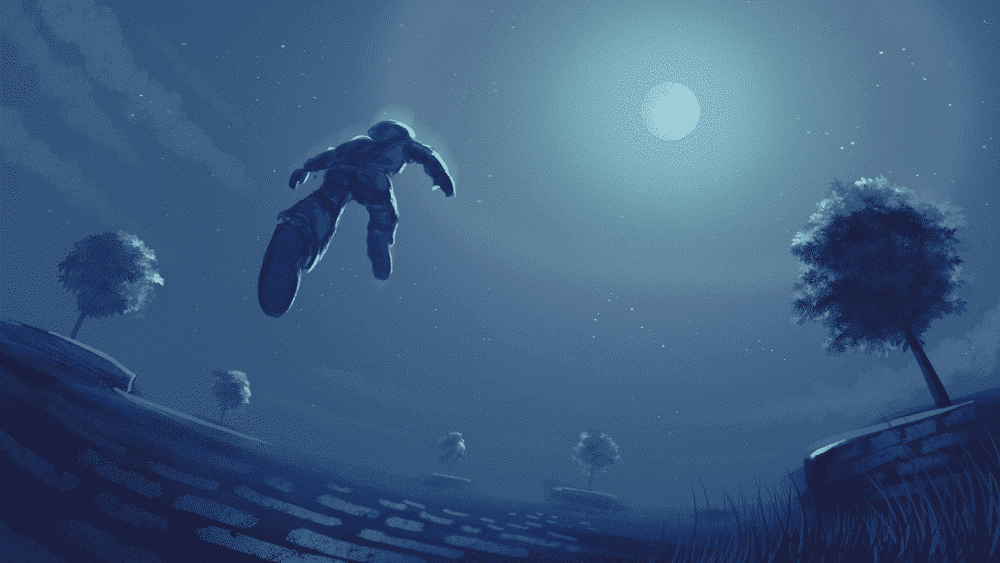It’s been a while since I thought about my lucid dream encounter, but every time I do it brings back a sense of dreamlike nostalgia that I don’t get from any other memory of my past.
Featured Image VIA
Before I go into that, let’s start by discussing the film that inspired this event – ‘Waking Life’. When this came out back in 2001, critics described it at an entirely new type of movie largely thanks to its creative combination of live action and animation (a technique that was later adopted by ‘A Scanner Darkly’). Director Richard Linklater describes how he used this cinematic method to portray a “realistic film about an unreality”:
The gestures, the sound, the human expressions all seem real, but this reality is then re-interpreted artistically. It becomes a kind of moving painting.
Overall, the film is a sort of collection of dreams and philosophies, all woven together by the protagonist (played by Wiley Wiggins) – a young man who shuffles through a dream meeting various people and discussing existential purpose.
In the movie, the unnamed hero does more listening than talking, but later participates actively in philosophical discussions with the characters in college lectures, bars, coffeehouses and on the street, to musicians and artists and quirky scholars. He begins to realise that he is living in a constant dream, which is only fragmented by the odd false awakening.
The content itself is enough to enrich the viewer with fascinating ideas on metaphysics, free will, social philosophy and the meaning of life. But when I first watched this movie back in 2008 (my first year of university – I remember it well) the overall comment on our perception on reality got me thinking about the significance of dreaming and consciousness.
In particular the concluding talk between the protagonist and a character he had briefly encountered earlier in the film describes a theory that living is simply a person’s momentary denial of being one with the universe, and that dreams offer a glimpse into the infinite nature of reality. Basically reality, or our ‘Waking Life’, is the illusion and dreams can help us to break free from this and offer insight into ourselves apart from our physical bodies.
At this time in my life, when huge changes were happening and I was beginning to awaken from the limited world that I had grown up in, I wanted to be an explorer of the dream life. And how could I do this? I figured the best way would be through lucid dreaming.
The concept involves being aware of dreaming – this simple realisation snaps your waking consciousness into the dream, enabling you to enter the realm with total clarity. Many people across the world undergo this practice for a number of reasons – fulfilling any fantasy being a key motive – but I wanted to see if I could do it in order to tap into the infinite dreamscape. Almost like a test to myself.
My journey into lucid dreaming wasn’t quite as romantic as my inspiration for it – I decided to use the ‘WikiHow to Lucid Dream’. I was a student, give me a break. I started by keeping a dream diary, writing down my dreams as soon as I woke up. Annoyingly I was a bit of a stoner back in those days, so my dreams were pretty blank, but I still made the effort to at least note down what emotions or sensations I experienced the moment I was up.
I also tried reality checks – apparently if you test reality throughout the day by asking yourself whether you’re awake or dreaming (by pinching your nose or closing your mouth) then this habit will overflow into your sleep as well, leading to the awareness that you are in fact dreaming. But for me, the techniques were not working.
I decided to go down another route – one that I was initially apprehensive to go down. Since I can remember, I have suffered from sleep paralysis. This condition is a phenomenon where a person is temporarily unable to move or speak as they are falling asleep or waking up. The body lock is often accompanied by terrifying hallucinations and voices – a common vision is ‘the man in the room’ whereby people can see or sense a demonic presence by their bed. So yeah, not fun at all and definitely not something that you’d want to practice.

Image VIA
However, the silver lining is that it is very possible to turn sleep paralysis into lucid dreaming, as both involve walking that fine line between being awake and asleep – you’re already halfway there. The only difference is that in sleep paralysis you lack the full immersion into dream imagery as you’re stuck in the body and so to turn it into a lucid dream, you need to focus on re-entering the dream space. There are several affirmations that you should think of both before going to sleep and while you are in sleep paralysis to make that transformation:
- Tell yourself “I am in sleep paralysis” to calm the nerves.
- Focus on your breathing and try to slow it down. The main hurtle to transforming sleep paralysis is fear.
- Concentrate on your intention to go deeper into the dream. If you have a specific desire, now is the time to remember it.
After a couple of weeks of attempting this practice, I’d reached my goal. It was a surreal experience and one that I struggle to put into words (but I’ll try my best) – I was a different character in my dream and at the same time it was me. I had in my mind that I wanted to try flying and my strategy was simply to launch myself from the ground as if I were jumping, and as I predicted, I continued to ascend. It was similar to other dreams I have had except this time I was aware I was in control.

Image VIA
When I was pulled out of the experience, I tried to put myself back in it, but my consciousness took over. However, when I was fully awake I felt a sense of spiritual awareness. At a time when my life was filled with partying, exams and existential confusion, I had taken the first step into a spiritual realm that I had not considered before. If you’d like to do the same, I’d strongly suggest watching ‘Waking Life’. Even if you never achieve a lucid dream, I have no doubt that this film will enrich your life both intellectually and spiritually.
If you’d like to read more on this, here’s our six step guide to having your first lucid dream. Sweet dreams.















